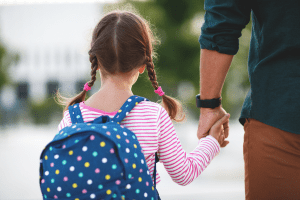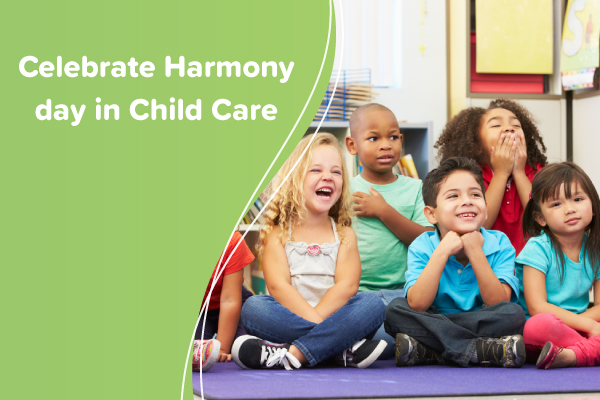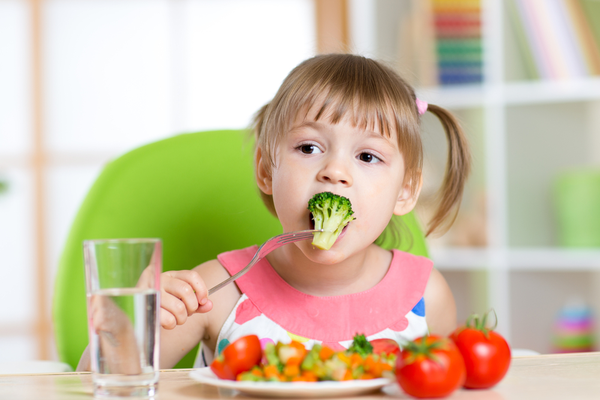As Melbourne’s lockdown restrictions ease, children, parents, educators and centre owners are heading back to early learning.
Early childhood education services can now reopen for all families, and while this is exciting for many there is likely to be a transition period too. New routines, or getting used to previous routines can take some time, but with a few strategies in place the transition back to early learning can be eased. Along with helping children and families to settle back in, ensuring centres are COVID Safe is a priority for all childcare services.
The coronavirus pandemic has affected the way we live and work, and the mental health and wellbeing of many. As we move into a new normal, supporting one another has never been more important, so take the time to get yourself and your centre’s community in the best position to go forward with minimal stress.

Returning to early childhood education
With restrictions now making way for all families to return back to early learning, parents and carers will no longer need to be permitted workers or apply for permits for their children to attend early childhood education services. Many children and families will be excited about heading back to centres, but there may also be some anxiety, concerns or adjustment difficulties during the transition. As well as affecting children, these challenges could also extend to parents and carers or educators and staff. This might be related to fear due to the pandemic or simply getting used to a change in routine.
Being prepared will assist in minimising any potential stress for reopening childcare centres. As such, it’s crucial to be aware of what everyone may be experiencing.
Anxiety separating from parents
For most children it’s likely that attending childcare services will be the first time they will be away from their primary carer in months. Needless to say, this could cause distress for parents or children, or both. Minimise separation anxiety with consistency at drop off and pick up as well as a comforter item if necessary such as a badge.
Getting used to social and group settings
With such heavy restrictions imposed throughout Melbourne for such a long time, many of us have not been around people outside of our immediate families. Being in social groups may be intimidating or anxiety-inducing, but exposure over time will help. Try working in smaller groups where possible and offer plenty of time for children to take some quiet time as needed and consider offering a quiet space with some books.
Adjusting to routines
Sleep and wake times may have changed during lockdown, and it can take a while to get used to a new schedule. Creating extra rest times could be worthwhile for some as we get back into the swing of things.
Feeling fearful of the virus
Children or adults could be feeling fearful of catching COVID-19 which could make them reluctant to head out of the house much. Signage, hand sanitiser stations, distance markers and masks show those attending your centre that you take infection control seriously and are actively minimising their exposure risk.
Tips for a smooth transition back to childcare
The pandemic has put a lot of pressure on all of us and had a notable impact on mental health and wellbeing. Encourage those around you to access wellbeing resources and take care of themselves. There are plenty of mental health and wellbeing strategies that could help here. Incorporating strategies such a yoga, meditation and mindfulness into the daily routines could be incredibly helpful in making the adjustment back to childcare smooth.
As well as being patient and supportive, these tips can help everyone transition comfortably:
- Be flexible: Shorter days, more rests, extra hugs — keep an eye on how everyone is traveling and try to be adapt where possible.
- Talk openly: Be open and honest about what’s been happening in the world and encourage children to ask questions.
- Visual reminders: At home and in centres, use a planner to show children what is coming up for each day so they know what to expect. This will help familiarise them with their routine and feel more secure.
- Renewing relationships: Reconnecting with one another is important and while it may be a quick process for some children, for others it will take longer. For a week or two consider incorporating activities that are specifically committed to helping everyone renew their relationships.
- Focus on patience: Just as heading into the pandemic was an adjustment that took time, so too is getting back to a new normal. Be patient with others and with yourself as we all navigate the return back to early learning.
A safe return back to early learning
To reduce risk and keep everyone safe and well, all centres are now required to have a COVIDSafe Plan in place to operate. High standards of hygiene and infection control are always a focus for early learning centres, and now more than ever before. According to the Victorian Government guidelines, it is essential that your plan demonstrates how you will meet all of the requirements set out by the Victorian Government. must outline:
- Your actions to help prevent the introduction of coronavirus (COVID-19) in your workplace
- The level of face-covering or personal protective equipment (PPE) required for your workforce
- How you will prepare for, and respond to, a suspected or confirmed case of coronavirus (COVID-19) in your workplace
The Government has provided guidelines and a template to assist centres in putting this COVIDSafe Plan together.
Return to care with effective infection control
COVIDSafe Plans should include physical distancing rules and requirements around good hygiene practices such as regular handwashing and hand sanitiser stations. ‘Workforce bubbles’ are recommended where possible, rostering the same people on together to decrease contact between different staff members.
While masks are required to be worn in most sectors, early childhood education settings are a little different. Staff can choose whether or not they wish to wear a mask while working with children, however when staff are working in other areas of the centre they are expected to wear masks. This could be working on reception or moving through staff rooms and foyers. Parents and carers should wear face masks for picking up and dropping off children.
The Department of Education website has a number of resources to support your infection control COVIDSafe strategies, including posters to display that remind those working in or visiting your centre to wear their face masks and maintain physical distancing.
Working together in a new normal
As we move toward a new normal and back to early learning, we will need to work together as a sector to get the best outcomes for children, families and educators. Set up some practical strategies to overcome potential challenges and make an effort to support the mental health and wellbeing of your centre’s community during this time.
The Practical Outcomes team is here to support you as you continue to provide children with the best start in life.


